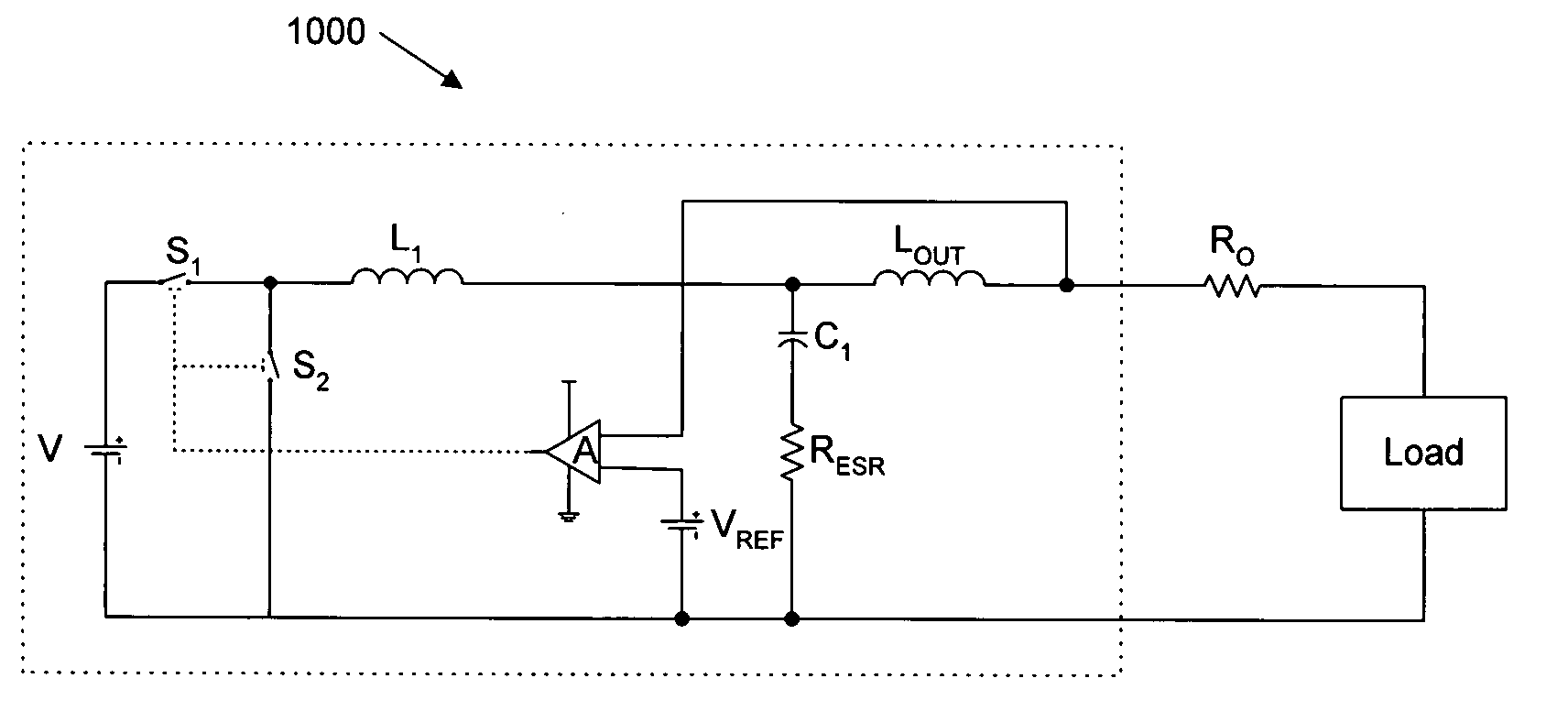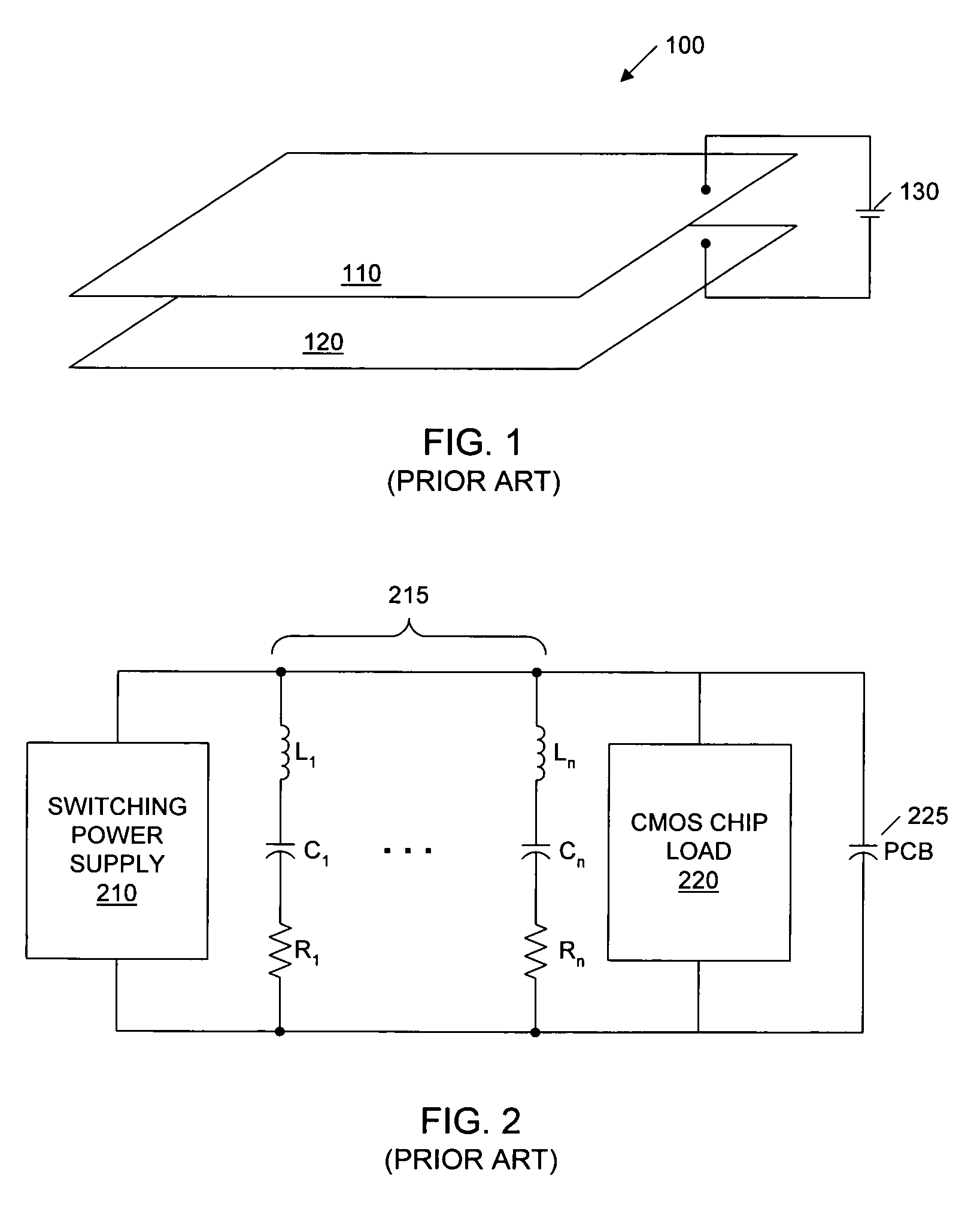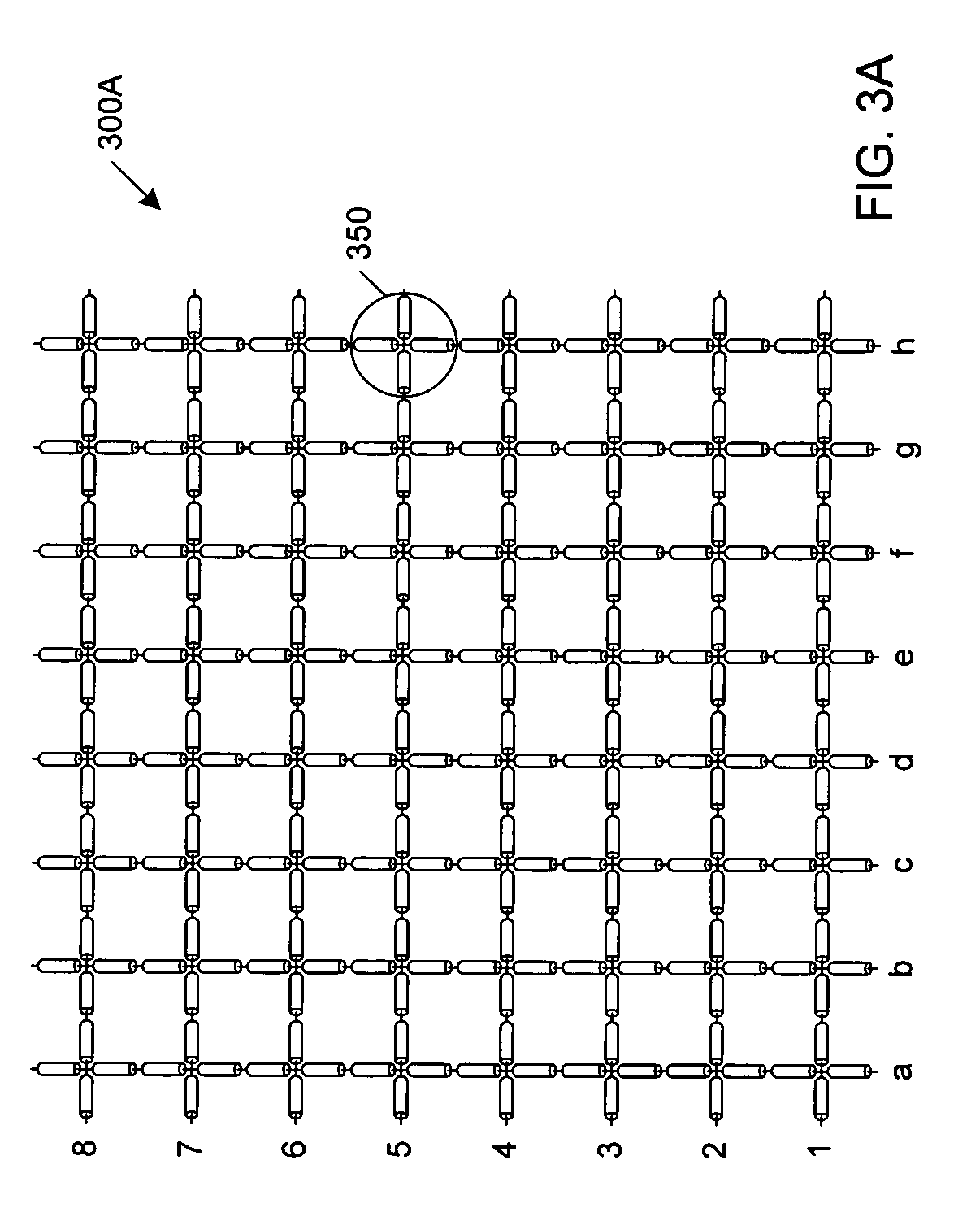System and method for determining the desired decoupling components for a power distribution system having a voltage regulator module
- Summary
- Abstract
- Description
- Claims
- Application Information
AI Technical Summary
Benefits of technology
Problems solved by technology
Method used
Image
Examples
Embodiment Construction
Incorporation by Reference
[0052]The following publications are hereby incorporated by reference in their entirety:
“Decoupling Capacitor Calculations for CMOS Circuits” by Larry D. Smith, IEEE Proceedings of the 3rd Topical Meeting on Electrical Performance of Electronic Packaging, Nov. 2, 1994; and
“Packaging and Power Distribution Design Considerations for a Sun Microsystems Desktop Workstation” by Larry D. Smith, IEEE Proceedings of the 6th Topical Meeting on Electrical Performance of Electronic Packaging, Oct. 27, 1997.
FIG. 3—Power Distribution System Model
[0053]FIG. 3A is a top view of a simplified schematic of one embodiment of a model of a power distribution system. As shown, the model comprises a grid 300A of transmission line segments. The segments are grouped into unit cells 350. As shown, there are eight columns labeled “a” through “h”, as well as eight rows labeled, from the bottom to the top, “1” through “8”. The model preferably comprises a SPICE array of transmission li...
PUM
 Login to View More
Login to View More Abstract
Description
Claims
Application Information
 Login to View More
Login to View More - R&D
- Intellectual Property
- Life Sciences
- Materials
- Tech Scout
- Unparalleled Data Quality
- Higher Quality Content
- 60% Fewer Hallucinations
Browse by: Latest US Patents, China's latest patents, Technical Efficacy Thesaurus, Application Domain, Technology Topic, Popular Technical Reports.
© 2025 PatSnap. All rights reserved.Legal|Privacy policy|Modern Slavery Act Transparency Statement|Sitemap|About US| Contact US: help@patsnap.com



